This is my entry for the multi-fuselage challenge. I'm not sure if it actually even qualifies since I placed the engines in a pod between the fuselages, but eh, I had this idea and liked it so I rolled with it. I honestly don't mind if it doesn't qualify, I had a ton of fun making it and that's enough for me. I hope you guys have just as much fun flying it around!
Note for challenge purposes: I don't know if the old parts limit counts external stores or doesn't, like the new one, but in either case here goes. This aircraft with the two-tone paint scheme has a total of 440 parts. If we remove the bombs, external fuel tanks, and the part-heavy custom missiles (Grab by the detacher to remove; it's a bit tricky to find as it sits nearly flush with the missile, connecting it to the pylon), ie. all jettisonable external stores, this drops down to 396 parts, right on the cusp of the old parts limit. However, if we count the 25 detacher-fired Boom 25 "cannon shells" (really downsized bombs) as "deductable" weapons, that goes down to 371 parts.
Should anyone want a version with less parts, or just want to see the plane in a different color, here is a version in "ghost grey" without the parts used for camouflage.
And of course as soon as I do my first boom 25 cannon, they release a beta of 1.9 with actual tank guns. Welp! In any case, since that's still in beta (and I already went through all the effort to make this thing lmao) this custom cannon is staying. I'm not going to use any of the new parts or features either; in the future, I might release updated versions of my builds because there are some really interesting things, like naming your missiles and having missiles drop from their stations with booster ingnition delay. But well, in the meantime, here's this!
Controls, Warnings and Operational Notes (IMPORTANT: READ THROUGHLY)
AG 1: Drag Chute
AG 2: Jettison External Fuel Tanks
AG 3: Jettison Outboard Pylons (Bombs)
AG 4: Jettison Mid-wing Pylons (Bombs)
AG 5: Jettison Inboard Pylons (Missiles) CAUTION: Ill-advised at high speeds. Pulling positive G recommended.
AG 6: Wire-Guided AGMs ARM ON
AG 7: Dive Brakes
AG 8: Nav Lights On/Off
Brakes: Spoilers
VTOL: Flaps/Slats Up/Down (Inverted) (use for pitch trim)
Known Quirks/Limitations:
The aircraft will slide/veer off to one side if you pitch up too hard (full elevators) at low, near stall speed. But to be honest, this is a very benevolent stall behavior considering what you're trying to do...
The aircraft bleeds energy massively in a turn. This is expected given its enormous wing area.
The landing gear is the biggest limitation. I can't make custom landing gear worth its weight in dirt for the life of me, and while after much trial, error and looking at how other people did it I was finally able to do something that works somewhat, it's still far from the stock landing gear of the game, so try to be gentle on landings. In a clean configuration and without flaps, the aircraft can land in speeds as low as around 120-110 mph (100 being stall) and the airbrakes are pretty effective (they also give you a slight pitch up moment when deployed; take note), so don't be afraid to come in slow for touchdowns - a speed of 160 mph is pretty safe, though you can go lower.
(Despite that, with a bit of care it's possible to land on the large aircraft carrier. If you come in below 130 mph and touch down gently, this plane can easily carrier land even without an arrestor hook. If you bounce a bit and the brakes aren't effective, remember you have drag chutes with AG1.
Veers off to the right on takeoff roll. As an addendum to the last one, ne very careful to not over-correct as the suspension will multiply yaw commands given by the landing gear. It is best to just let it happen and rotate as takeoff roll is not very long.
The external fuel tanks affect maneuverability and speed considerably. Jettison them if you need to maneuver hard.
The flaps in this plane are there mostly for the aesthetics and to help in very short takeoff rolls. Landing is not made easier by their use - in fact it is often made more difficult. If you're landing clean, it is recommended to not use flaps.
If most or all cannon ammunition is used, the resulting shift in the centre of gravity will result in the plane rolling to the left if pitched up aggressively (full elevator). Each projectile weighs 25 pounds!
NOTE: The custom "MAS-1" missiles in this aircraft are supposed to be old, early MCLOS (Manual Command to Line Of Sight) wire-guided missiles. To partially replicate the limitations inherent to this kind of manually-guided missile, I have adapted a Guardian missile (must maintain lock) for air-to-ground and employed a very low targeting angle, forcing the operator to keep the plane flying more or less towards the target for its entire travel time, a classic disadvantage/limitation of MCLOS and SACLOS systems.
The missile is also pretty slow, but on the plus side, lock time is instantaneous since target acquisition is done by the Mark 1 Mod 0 Eyeball.
NOTE 2: As you may have noticed this aircraft has two separate kinds of airbrakes. First are the spoilers, located on the wings and slaved to the "Brake" command which also cuts throttle. This is meant to be used for landing, and is extremely powerful - Thanks to its location on the wings it also causes a noticeable pitch-up moment. Second are the dive brakes, slaved to Activation Group 7. These are placed in a manner as to cause a much smaller pitch-up moment, and are meant to be used with full throttle in a diving attack. You may use it as an assistance in landing but this is ill-advised and unnecessary.
CAUTION: The cannon barrel sticks out the front quite a bit - do your best to avoid touching it on the ground upon landing (ie. always properly flare), or else SP physics might cause... interesting results. It is also ill-advised to land with fuel tanks and ordnance (especially the bombs) on the wings, for the reasons mentioned before about the landing gear, though it is perfectly possible to do so - just be extra careful.

Cockpit lights guide
As a side note: Grass-cutting low-altitude, high-speed canyon runs is what this plane was built for. Push that throttle to the max and go hunt some truck convoys!
Backstory
Shortly after WWII, aiming to counter the newly percieved threat of Soviet armor and amphibious landings, Socrux had developed the S.Ca. 152 Narval using aerodynamic data captured from Germany. However, the Narval was a failure; falling drastically short of all expectations, the "oversized, overweight, over-engineered mess" with a 50mm cannon had been deemed inadequate for all but limited coastal strike roles. The large plane was heavy and cumbersome; Handling was considered lacking and pilot visibility was poor. Despite being based on the Me 262, which had been designed with a remarkable consideration for maintenance as far as early jets are concerned, the Ca. 152's size and height proved troublesome for ground crew and maintenance personnel. The few pre-production models that did go into limited service saw alarmingly low readiness rates, and in particular the location of the gun atop the already tall nose proved troublesome for the ground crew. Rearming the craft was a tiresome and time-consuming task, and servicing it wasn't much better. To add insult to injury, advances in Soviet armored vehicles would soon mean its 50mm cannon was no longer adequate.
However, valuable lessons had been learned with that aircraft's failings, and Socrux was still confident in the feasibility of cannon-armed anti-tank aircraft. As such, in the late 40's, the director's board issued a requirement to the same design team that had designed the Ca. 152 calling for a new strike aircraft to replace the Narval.
The new craft was to be no larger than a fighter, though its weight was naturally expected to be larger, which would result in the need for larger wing area. It was to be easy to maintain, service and rearm: Turnaround was to be as fast as possible. Preferably, it was to be powered by one of the same engines used in the Narval, or two downsized, redesigned versions of these engines - the second option was ultimately chosen due to the higher reliability of the new models. It was to have good visibility for ground attack, good handling characteristics for low-level flying through terrain and attacking small ground targets, be survivable and most importantly - it was to be armed with a 90 milimeter cannon for the anti-tank role, plus any number of either .50 caliber machineguns, 20 or 30 milimeter cannons as secondary armament.
The conflicting requirements posed a massive challenge to the engineers assigned to this task. They needed to design a compact aircraft, smaller and more agile than the Narval, still carrying a massive 90 milimiter gun - far larger than the 50mm cannon carried by the previous design. Various different configurations were explored and considered before the design team decided on a course of action: design an aircraft with two fuselages, one on the left side housing the pilot and one on the right side housing the large gun.

Initial project studies for the new craft
This arrangement brought quite a number of benefits to the unique challenge faced by the engineers. First, not needing to worry about placing the pilot and the gun in the same fuselage allowed for a much shorter and more compact aircraft. It also meant both the gun and the pilot could sit low near the ground, reducing the need for ground support equipment: the pilot could enter the aircraft merely with the aid of a spring-loaded step on the nose, and ground crews could service the guns without the need for ladders. Most importantly however, it allowed the pilot to sit at the very nose of the aircraft in a canopy with excellent visibility, with a particularly good downwards line of sight angle, and it provided lots of room for the cannon, its ammunition, and still plenty of space for secondary armament: Socrux engineers decided on no less than four 30mm autocannons, and the main 90mm gun carried an impressive 25 rounds.


The ample canopy gives the pilot superb visibility.
Of course, said arrangement also brought several disadvantages along with its good points. Apart from the increased structural weight, the weapons being mounted in an axis dislocated from the pilot's brought convergence issues, along with great concerns about the cannon's recoil. Ammunition expenditure also shifted the centre of gravity sideways in flight, and while the casings for the 90mm gun were fed back into the drum in an attempt to mitigate this issue, it was never really solved. The front landing gear had to be installed in a small gap between the engines, and several other tricky issues had to be tackled by Socrux engineers, often in less than optimal ways. Furthermore, the location of the engines, crammed between the two fuselages, proved tricky for maintenance crews but overall it was considered a worthwhile price to pay.

Business end of the 90mm gun.
The 30mm cannons installed on the craft were modified copies of captured German MK 108s adapted with a slightly longer, forged barrel instead of the stamped barrel of the 108s, allowing muzzle velocity to be pushed from 540 to 600 m/s; Original plans called for guns based on the project of the newer Mauser MG 213C revolver cannon, much like the British ADEN and French DEFA cannons; however, delays in development of such weapons led the design team to settle for the aformentioned MK 108-based design instead.

Nighttime test firing of 30mm cannons.
The potent 90mm cannon carried 25 rounds in an ammunition drum, and was fed by an autoloader system that was quite advanced for its time. Its strange placement, dislocated from the aircraft's centreline, caused much concern about the yaw that would be induced by recoil upon firing of the gun, and great effort was spent on devising buffers and a muzzle device to mitigate recoil. Firing mainly armor-piercing or high-explosive shells, the 90mm gun was to be the craft's main armament to deal with hostile tanks, armored vehicles, emplacements, and light shipping.

One of the late operational evaluation prototypes performing a low-level flight over the ocean in a simulated anti-shipping mission.
Two hardpoints under the engine pod and up to six hardpoints under the wings were provided, albeit rarely fully used. The aircraft could carry bombs, torpedoes, rockets, napalm canisters, and the newly-developed MAS-1, a MCLOS air-to-ground wire-guided missile based on the Ruhrstahl X-4. Intended to destroy targets such as fortifications, landing craft, small ships, armored vehicles and heavily defended targets such as powerplants and fuel tanks, the manually-guided missile had a very limited performance in field conditions. The disappointing results meant it was only produced in small numbers, and never fielded operationally; The design would later be refined into the MAS-1B in the mid to late 50's, finally being put into service.

Close-up of a MAS-1 mounted to an inboard wing pylon. Only the inboard pylons had the necessary wire spools and provisions to allow the firing of the novel wire-guided missile.

A prototype test-fires a MAS-1 missile
The pilot was provided with top-notch visibility. The instrument panel was placed low on the aircraft in order to take advantage of the full potential offered by the twin fuselage layout allowing the cockpit to be placed on the very nose of the aircraft, giving the pilot unparelled downwards line-of-sight. As a result, a special gunsight had to be developed, much "taller" than other gunsights of the time. It was a remarkably simple collimator sight, with some degree of range adjustment being possible. Its reflector glass is remarkably large, allowing the pilot a clear view of his target.

A pilot guides a MAS-1 missile into a mock convoy target. The excellent visibility of the canopy made the little plane a perfect candidate for testing the new weapon.
Since the second fuselage with the gun sits right on the side of the pilot, a large anti-glare panel is usually painted all around the left side of the right fuselage's nose, to prevent glaring sunlight reflecting on that fuselage from interfering with the pilot's vision.
Turnaround and servicing of the aircraft was quick: The 90mm cannon sat low on the right fuselage, providing easy access to the ground crew. The entire ammunition drum could be removed from the fuselage in minutes, and a fresh one inserted in its place, allowing for fast rearming of the aircraft. The aircraft's low ground clearance allowed personnel to perform most tasks at a comfortable working height, and access panels located all around the aircraft provided easy access to most components ground crews would need to operate during a turnaround. Neither the pilot nor the ground crew needed any external ladders to board or service the aircraft.
By January 1950, the first prototype made its first flight, and the aircraft recieved the official designation S.Ca. 163. Thanks to its unusual and asymmetric appearance, it was christened the Quimera (Chimera), and made quite an impression on all lucky enough to see the curious plane. Subsequent tests showed promising results: The aircraft handled well and performed as expected. Test firing campaigns of the main gun were conducted against a myriad of targets and soon following prototypes would be flying simulated missions of all sorts the aircraft was expected to perform - Close air support, interdiction, anti-shipping and armed reconaissance - with very positive results. The aircraft showed great promise, and bright times seemed to be ahead of the strange little Quimera.

The first prototype on its rollout

The Quimera on its maiden flight
The aircraft's compactness and versatile twin fuselage design allowed for several possibilites. There was considerable interest for a reconaissance version, with the armament on the right-side fuselage replaced by a vast array of large cameras and sensors of all sorts, a single prototype being built. Also studied were versions for battlefield observation, with armament reduced to two .50 caliber machineguns in favor of an observer sitting in a "bubble" at the front of the right fuselage; a night fighter variant with the 30mm cannons moved higher up and the 90mm gun removed to make way for a large search and targeting radar; and an unarmed conversion trainer, with the left fuselage simply duplicated to the right side for housing the instructor. The aircraft's compact size and good low-speed handling characteristics also made it a solid potential choice for carrierborne operations, and as such a navalized version was proposed as well.

A Quimera banks hard in a canyon during a mock low-level attack run in evaluation tests
However, in spite of the aircraft's great potential, further advances in other aircraft quickly rendered it obsolete. Advances in armor and air defenses meant that using a large cannon to destroy tanks was no longer feasible, and emphasis was placed on faster swept-wing jets with rocket pods. Though there was still considerable interest in a reconaissance version, which would have performed excellently, newer fighters were much faster and could be adapted into reconaissance roles with a far higher survivability rate. As such, the Quimera's development was cancelled in November 1951 before the it entered production. Though a considerable number of prototypes were built and flown, it never saw active service. A handful of these aircraft survive in museums, and at least one twin-cockpit trainer is known to be airworthy and flying as a civilian craft.
Gallery:



A Quimera fires its main gun.

Operational evaluation prototype in a low-level pass

Test-firing of the MAS-1 against seaborne targets

An operational evaluation prototype demonstrates short-field landing capabilities with the aid of a drag chute. Note the retracted flaps.

Rare rear angle picture

Nav lights

Final approach at night. Note the landing gear lights


No kill like overkill: a Ca. 163 testing its 90mm gun's effectiveness against airborne targets, in this case a S. Q-160 target drone
Specifications
Spotlights
- goboygo1 5.4 years ago
- MrVaultech 5.4 years ago
- Strikefighter04 5.4 years ago
- MethaManAerospace 5.4 years ago
- BowtheAvali 5.4 years ago
- Bife 5.4 years ago
- Renameduser4 5.4 years ago
General Characteristics
- Predecessor Multi-fuselage Aircraft Challenge
- Created On Windows
- Wingspan 49.2ft (15.0m)
- Length 39.2ft (12.0m)
- Height 12.1ft (3.7m)
- Empty Weight 5,952lbs (2,700kg)
- Loaded Weight 14,699lbs (6,667kg)
Performance
- Power/Weight Ratio 2.751
- Wing Loading 33.2lbs/ft2 (162.1kg/m2)
- Wing Area 442.7ft2 (41.1m2)
- Drag Points 4223
Parts
- Number of Parts 440
- Control Surfaces 10
- Performance Cost 2,170

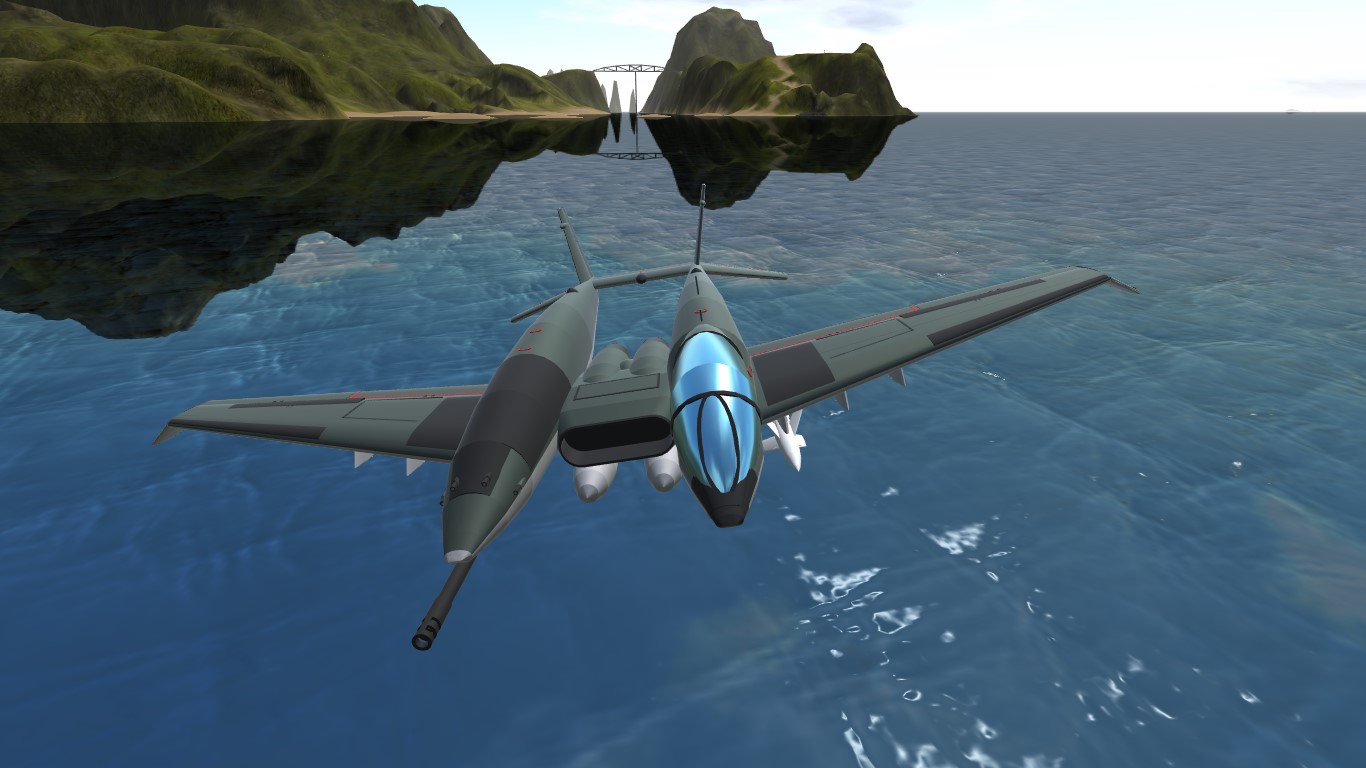
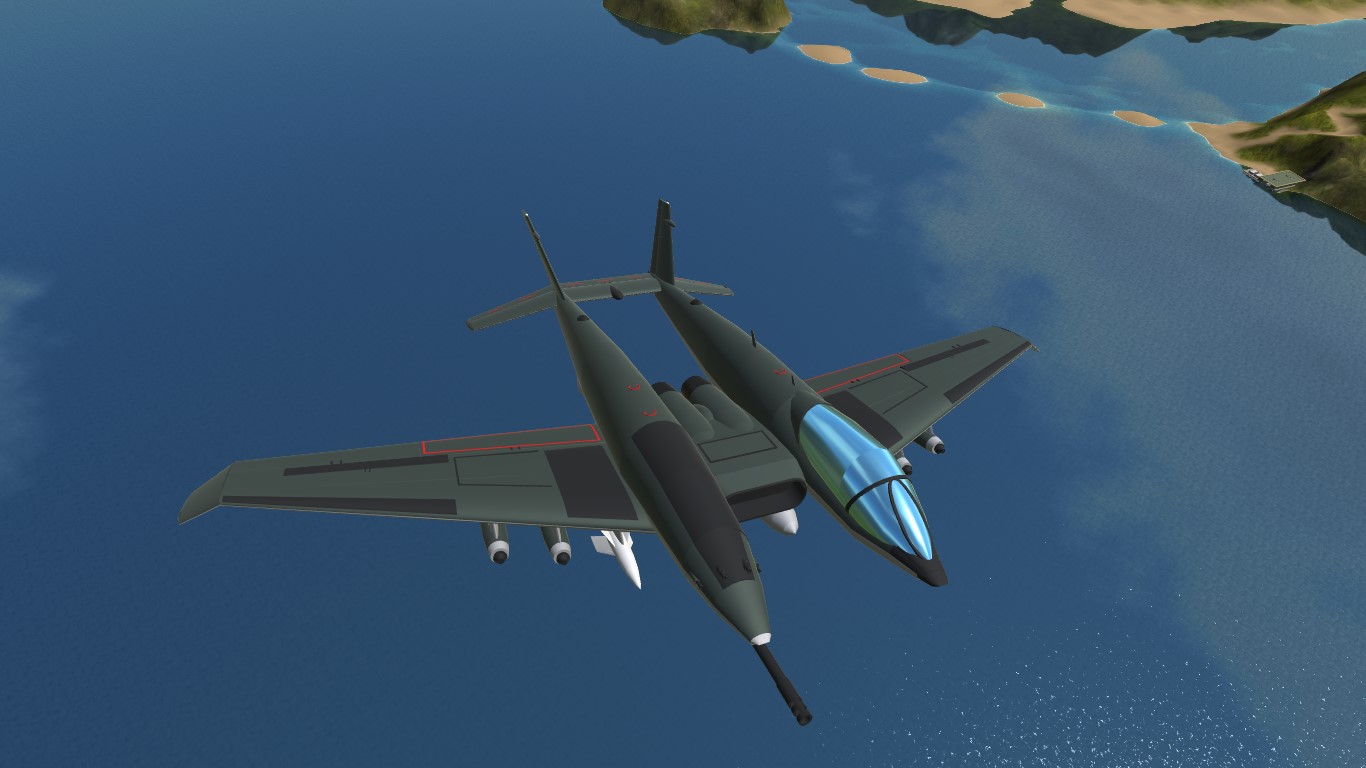
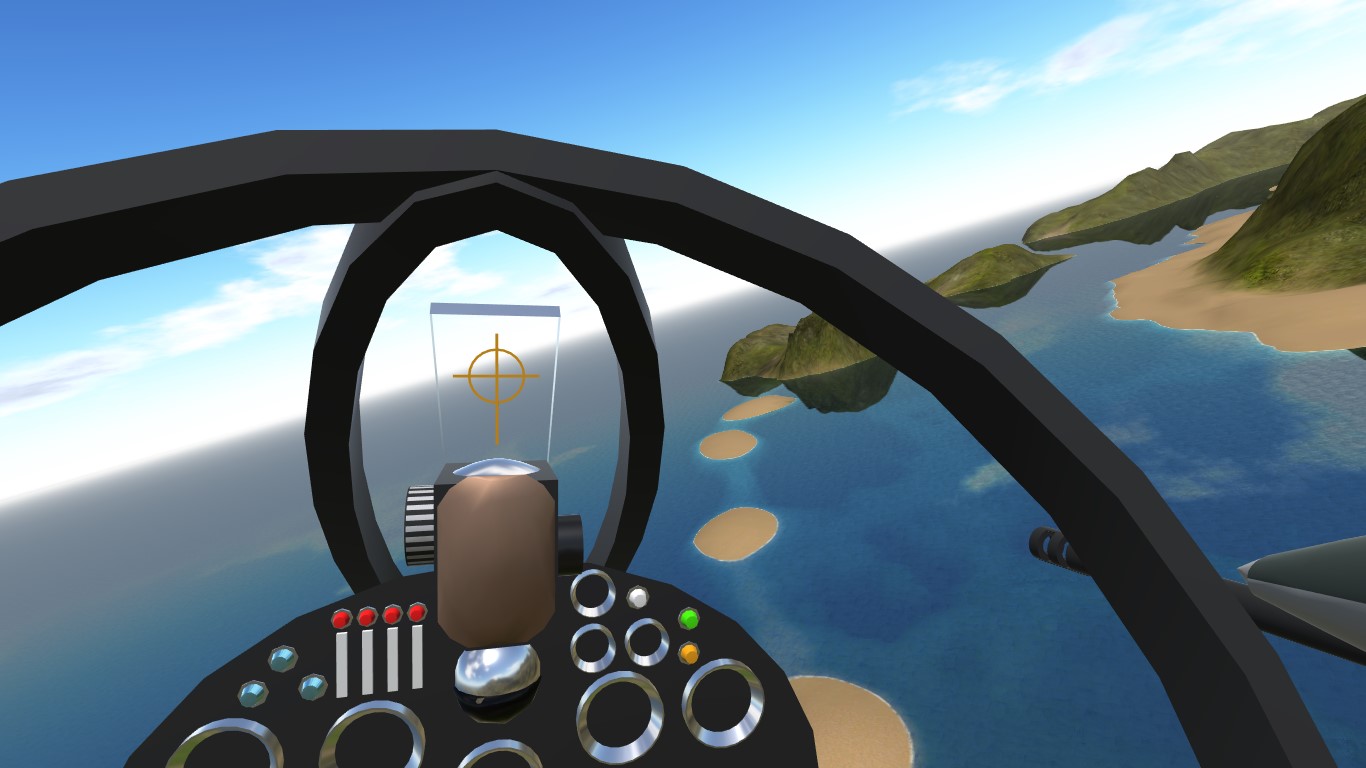
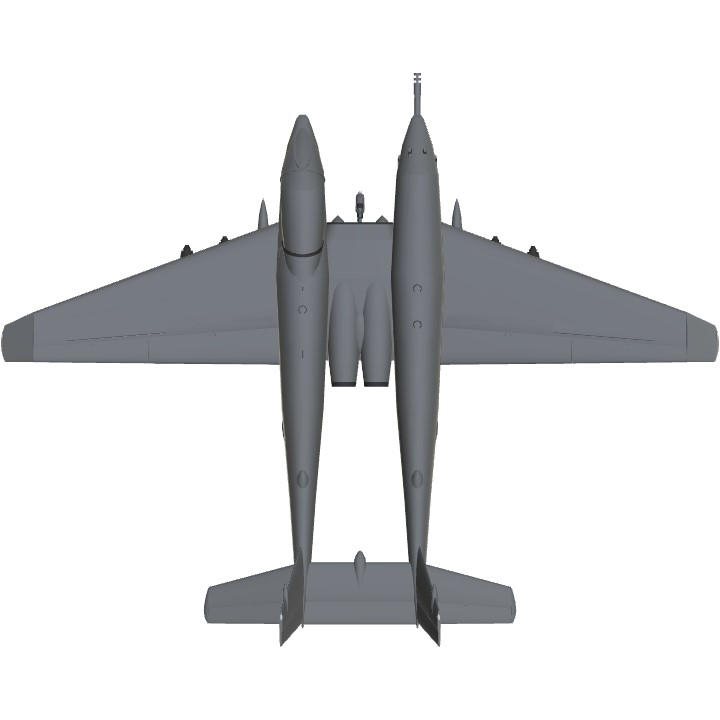
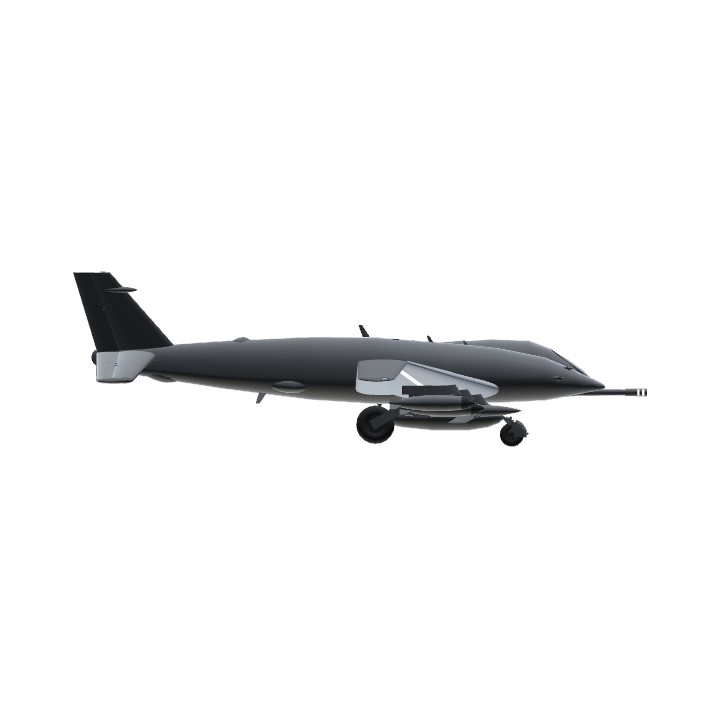
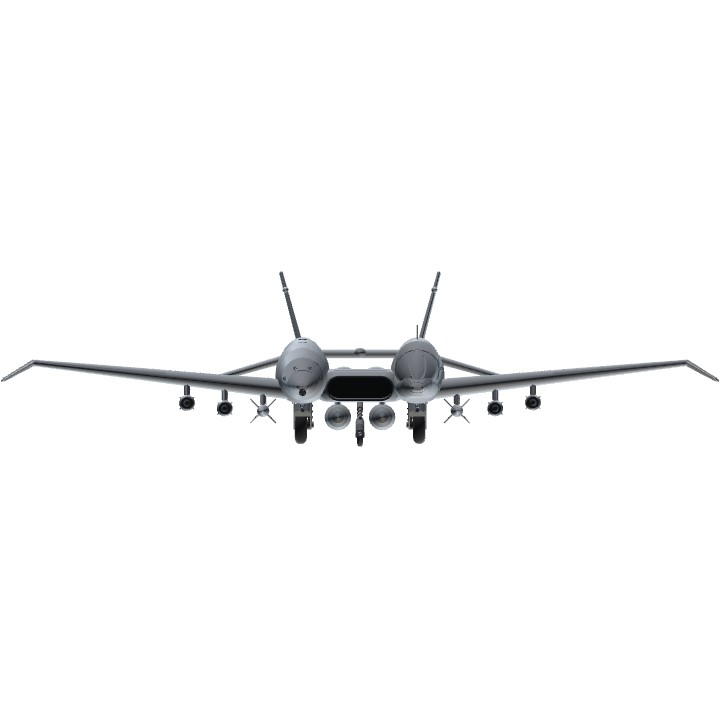
@FlyingHueman Ah, ok, thanks for the guide. You deserve every bit of praise that you get!
@wonkapilot The only reason I didn't was because it's 99,9% the same as the "Ghost Grey" scheme. The only difference, and this is easy to do yourself, is that two of the fuselage sections - one on each side - of the tail are painted orange. It's the semi-gloss orange in the color palette, it shouldn't be hard to find.
And thank you! That's exactly what I wanted to achieve with this bird.
@FlyingHueman Could you please post the prototype paint scheme? I like it. Oh, by the way, this is an unusual design, but it flies amazingly. Just like it should instead of just flying easily.
Ok wow. asymmetrical ocd intensifies
This thing is FREAKING beautiful!!!!
@FlyingHueman of course! You should frame it hahaha
@MrVaultech I'm really glad you liked this airplane that much. That was my impression too, it's one of the most fun I've had with one of my own builds in a while. It keeps you busy just enough to be interesting, and responds well in most cases.
And yeah, cockpit view was something I really wanted to try out on this one. I tried to make it as simple as possible while still keeping it interesting. Thanks a lot for your comment.
And like I said in the post just below, the stories just write themselves in my head as I build the plane, so I've got to put them somewhere, lmao
@Treadmill103 Haha what can I say, the stories write themselves in my head and I've got to put them somewhere! Thanks, man.
@Mustang51 Doesn't it? I've been meaning to make some drawings of my other builds for quite some time in fact, lol. Thanks!
@MarshallLewisAerospace @Mercyaircraftcorporation @Seeras Thanks a lot, guys!
Well done! 👍
I'm thinking this is a beyond excellent aircraft here.
After reading through the description and backstory, downloading the version here, realizing my phone didn't like that, then choosing the slightly lower part count for testing, I found the Quimera a amazing aircraft to fly for its slight asymmetry, and one that was exceptionally fun to flay as well.
It has amazing details, especially in cockpit view that I just so adore, and a well-written and very in-depth backstory about the aircraft and its creation.
Overall, it's just an utterly amazing plane, and I'm feeling it should get more recognition than it has already.
This is fantastic! What a great looking aircraft you made with a really cool concept. However, that drawing you made looks even better! You can draw really well
@FlyingHueman thx
@lastv801 Why not? As long as the credit system works (and I've attested it works quite well, lol)
@FlyingHueman can i make a varriant of this?
Quite amazing. Well done.
Love the 90mm cannon!